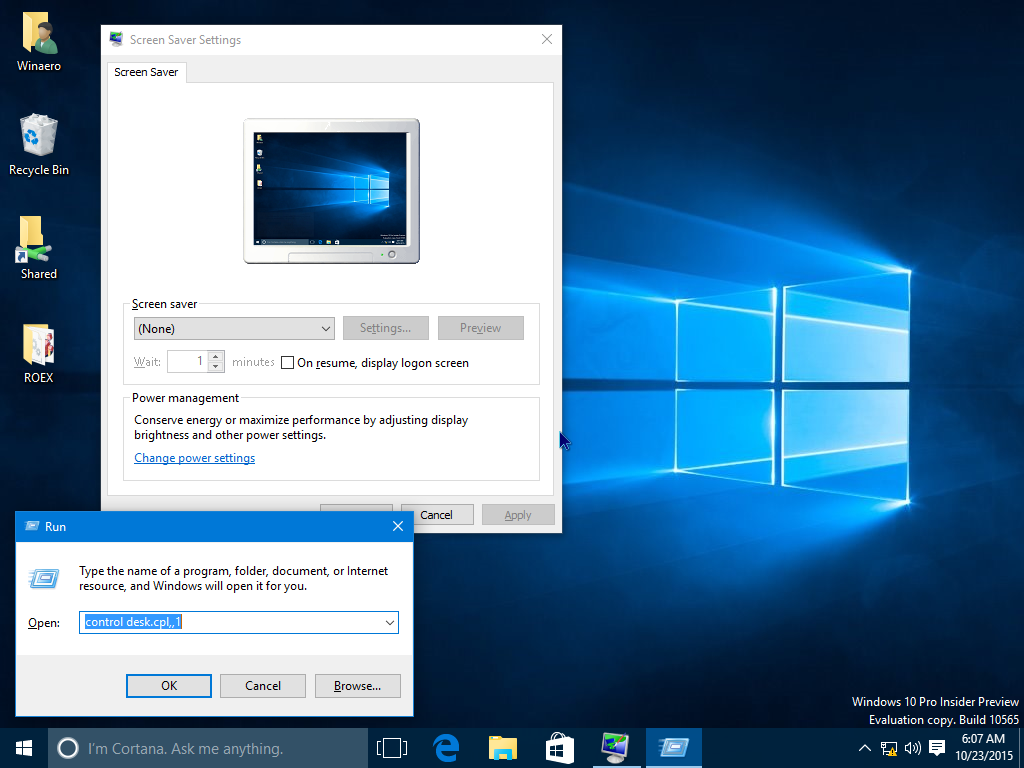Turn Off Screensaver Windows 8
Turn off Windows laptop screen with ScreenOff. When you need to go away and want to turn off the laptop screen, just click on its icon and the laptop monitor will be turned off. No need to lock Windows. This free tool does not put Windows to Sleep; it just turns off the laptop screen. When you want to turn on the laptop screen. Windows Server TechCenter. In our big VM environment I would like to turn off the screen saver (as screen savers consume resources off of guests and ultimately hosts) and still have the security measure that the sessions be locked out upon idle time.
When working with a computer, sometimes you have to walk away to do some other things, pausing operation on the computer and leaving it inactive. In this situation, you may not want others to pry into your ongoing work on the computer screen. Then it’s a good idea to launch the Screen saver to hide or even lock your screen. Now in this page, I will show you how to turn on or off Screen saver in Windows 10. There are two ways for your choices.
Way 1: Turn on or off Screen saver via Settings
Step 1: Right-click on the Windows 10 desktop and then select Personalize from the context menu. You will go directly to the Personalization page of the Settings app.
Step 2: Click “Lock screen” on the left side, and then click “Screen saver settings” at the bottom of the right side.
Step 3: After the Screen Saver Settings dialog opens, you can adjust the settings to turn on Screen saver. Click the drop-down button that starts with “None”, and select one screen saver from the drop-down menu. In the field next to Wait, set a time interval, after which to activate the Screen saver. Check the “On resume, display login screen” option, if you want to lock the screen after Screen saver starts. Finally, click Apply followed by OK. After the specified time of inactivity, Screen saver will launch and display the login screen.
To turn off the Screen saver, you just need to select “None” from the drop-down menu under Screen saver, uncheck “On resume, display login screen”, and click OK.
Way 2: Turn on or off Screen saver via Control Panel
Step 1: Open Control Panel, and then click Appearance and Personalization.
Step 2: Click the “Change screen saver” link.
Step 3: After Screen Saver Settings dialog opens, adjust the settings to turn Screensaver on or off.
Related: How to Turn on/off Battery Saver in Windows 10
So recently my computer started turning my screen monitors off after a while without activity, if I move the mouse or hit the keyboard they turn back on. I just want them to stay on.
My System is windows 8.1 64 bit, I have 2 screens with mini display port and 1 television with hdmi which often is in regular television mode when this issue happens.
Now before you jump to conclusions this is what I've tryed:
- Disabled screen saver
- Power saving settings to high with followingset:
- Turn of the display: Never
- Put the computer to sleep: Never
- Turn off hard disk after: Settings: Never
- Sleep: Sleep after: Settings: Never
- Display: Turn off display after: Settings: Never
- Display: Enable adaptive brightness: Settings: Off
- Multimedia settings: When sharing media: Settings: Prevent idling to sleep.
Any pointers that get me in the right direction will be greatly appreciated.
WarpzitWarpzit
Screensavers Turn Off And On
1 Answer
I found this post that worked for me. It says:
at first you must set value of 'Attributes' = dword: 00000002 in [HKEY_LOCAL_MACHINESYSTEMCurrentControlSetControlPowerPowerSettings7516b95f-f776-4464-8c53-06167f40cc998EC4B3A5-6868-48c2-BE75-4F3044BE88A7] , and then in 'Power Options' - 'Advanced Power Settings' in the 'Display' item appears 'Console lock display off timeout' in which we set the necessary time.
Hope it helps.